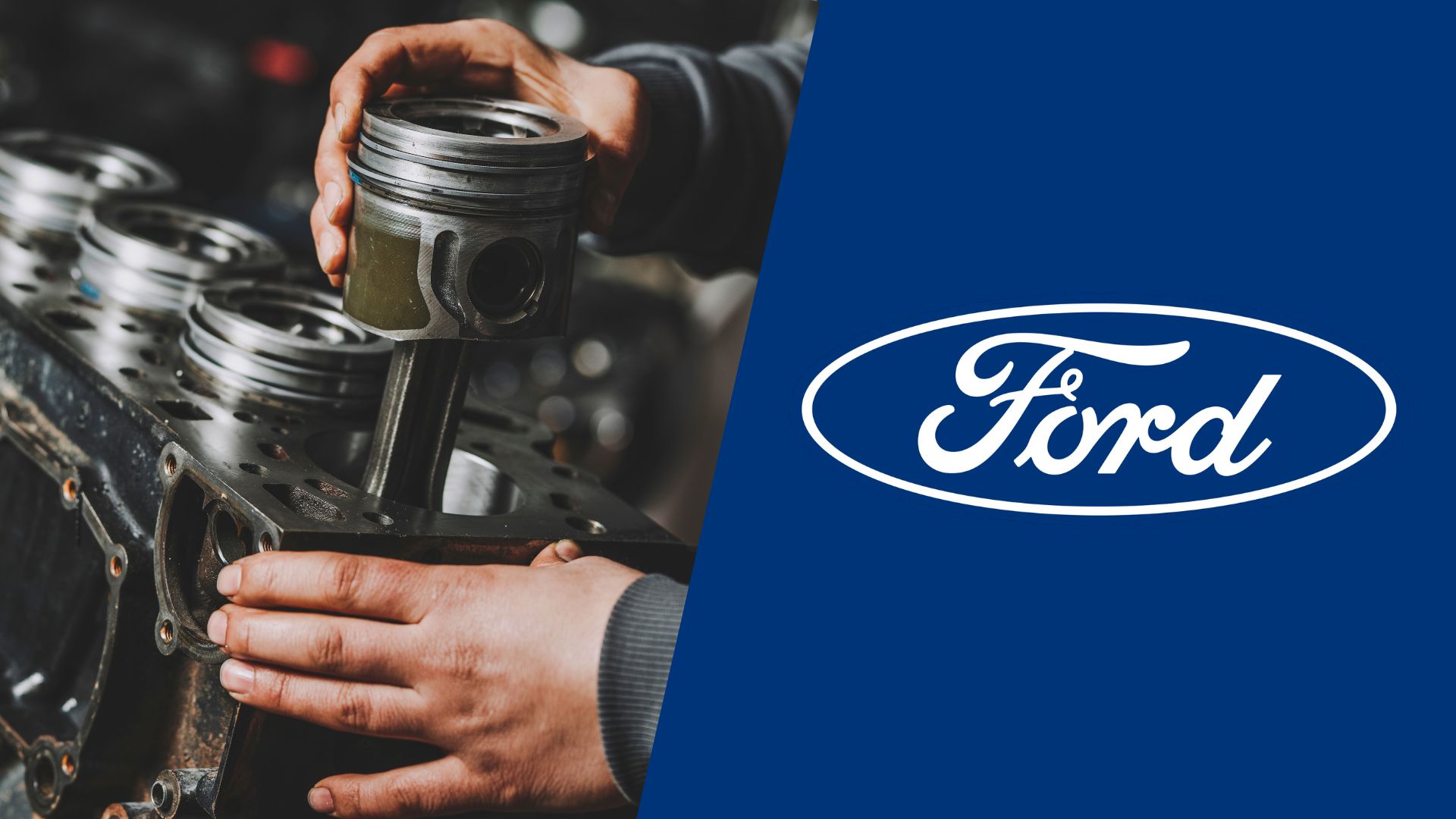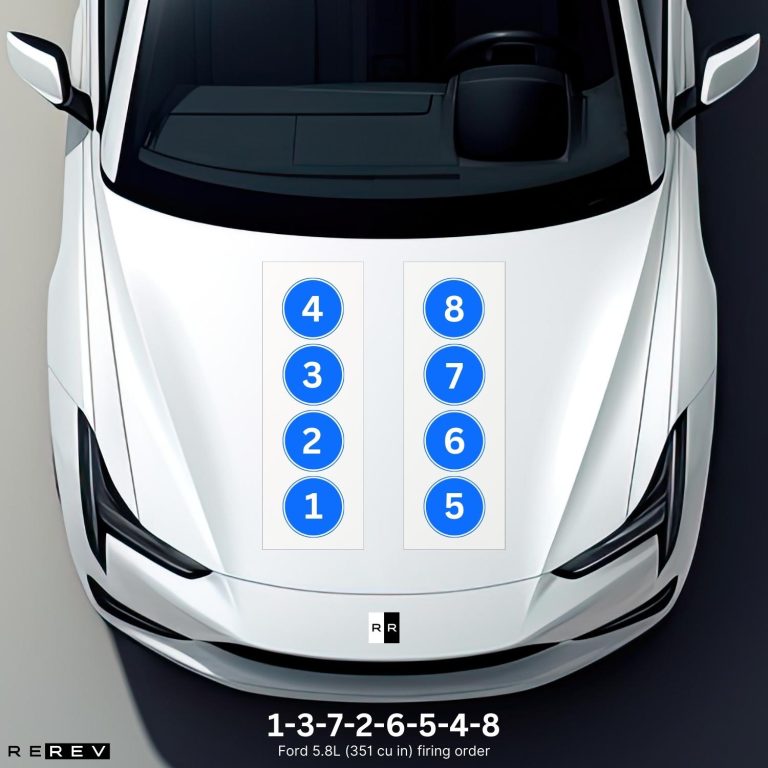Ford 5.8L (351 cu in) firing order — diagram & guide
Aligning performance with the precise Ford 5.8L firing order details.

In Ford’s long history, the 5.8-liter engine has held a special place in the hearts of many drivers. However, as the time came to figure out the Ford 5.8L (351 cu in) firing order, things usually got messy as the famous automaker had several engines with this exact displacement.
So, if you are having trouble figuring out the order in which you should check the spark plugs, coils, or valves, this guide will help you out. We’ll discuss the firing sequence of each of the prominent 351 cu in engines that Ford has produced, so you’ll have an easier time doing the repairs.
Ford 5.8L 351W firing order
The first engine we’ll discuss here is Ford’s famous 351 Windsor engine which was produced for nearly 30 years from 1969 to 1997. To give you a straight-up answer, the Ford 5.8L 351W firing order is 1-3-7-2-6-5-4-8, which is a different order from some other 5.8-liter engines we’ll discuss here.
It was mainly because the brand wanted to optimize the engine firing noise and reduce the stress put on rod bearings and the oil pump. This engine has cylinder banks optimized to reduce the stress of firing by using a sequence that interchangeably uses front-planted cylinders and those at the back of the engine.
We’ll further discuss the cylinder banks in further sections of this guide, but for now, you should know that the firing order of this engine is different than the firing order for other Ford engines of that time.
Ford 5.8L 351 Cleveland firing order
If you own a Ford vehicle with a 5.8-liter Cleveland engine, the firing order will be the same as on the previous Windsor engine. So, the Ford 5.8L 351 Cleveland firing order is 1-3-7-2-6-5-4-8, and this is again different than the “normal” firing order 1-5-4-2-5-3-7-8 of that time.
The most important thing with these two engines is not to confuse them with previous generations of Ford’s V8s because of that exact difference in the firing order.
Ford 5.8L Trinity firing order
Even though the Windsor and Cleveland engines were produced a few decades prior to the latest “Trinity” 5.8-liter engine, the firing sequence remained the same. The Ford 5.8L Trinity firing order is 1-3-7-2-6-5-4-8, which is the same sequence as for the 351W and 351C.
While this is a rare thing to spot in the automotive world, it’s all due to the distributor rotation which fires the spark plugs in this sequence to reduce the load put on the bearings and bolts.
The Trinity engine is also the most powerful one out of the bunch, and it solely powers the Shelby Mustang GT500 produced between 2013 and 2014. It was later replaced with the “Predator” engine, so if you own one of these Mustangs, you should know that the firing order is the same as that of an older-gen Windsor engine.
Ford 5.8L (351 cu in) cylinder diagram

Now that you know the exact firing order of all Ford’s 5.8-liter engines, it’s time to move on with the task of repairing your car’s engine issues. To do that, you’ll also need to know where the cylinders are located as this makes it much easier to follow the firing order and do the necessary replacements.
Looking from your car’s radiator towards the windshield, there are two banks of the 351 Windsor engine – the passenger’s side one with cylinders 1, 2, 3, and 4, and Bank 2 with 5, 6, 7, and 8 on driver’s side.
The Cleveland engine also used the same cylinder pattern, while the newer Trinity engine from the GT500 uses the same cylinder placement, only with the Eaton supercharged placed on top.
5.8-Liter Ford’s vehicle applications
So, you are now officially updated on where to look and what to look at when it comes to working on your 5.8-liter Ford engine. To make things easier to track (we know things can go south due to so many different engines being there), here’s a list of all the models that use these specific engines:
Ford 351 Windsor:
- 1969-1970 Mustang
- 1979-1991 Crown Victoria
- 1987-1997 F-Series
- 1970-1975 Torino
- 1975-1996 E-Series
- 1977-1979 Thunderbird
Ford 351 Cleveland:
- 1970-1975 Ford Mustang
- 1970-1974 Ford Cougar
- 1970-1971 Ford Torino
- 1971-1973 Ford Ranchero
Ford 351 Trinity Supercharged V8:
- Shelby Mustang GT500
Our take
We all know how expensive engine repairs can get, even if it’s just replacing the factory-set ignition coils or simply removing a distributor. So, we hope that this guide will set you on the right track if you know how to work on your car yourself and replace the faulty components thanks to the firing order listed in this guide.
Don’t forget to check the exact engine type of your vehicle based on the years and engine types we’ve mentioned, since even though they all use the same firing order, some components could differ.